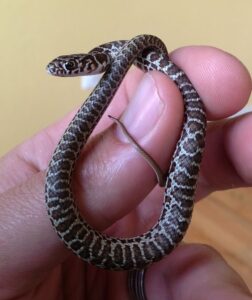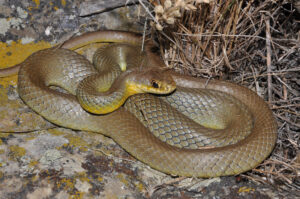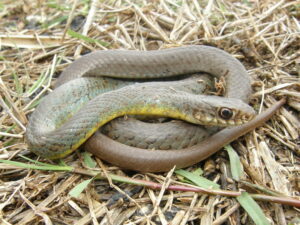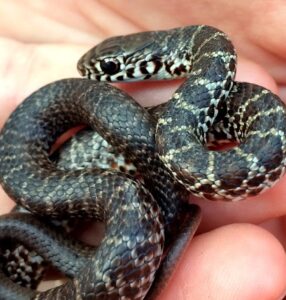Eastern Yellow-bellied Racer (Coluber constrictor flaviventris)
Updated on
25/04/2024The eastern yellow-bellied racer or eastern yellowbelly racer is a subspecies of the eastern racer (Coluber constrictor). The thin-bodied, smooth-scaled, medium to large colubrid is a native of North America. The active and agile racer uses its speed to capture prey and escape predators. Though basically a ground-dwelling snake, it climbs on trees and bushes to hunt.
Scientific Classifications
- Suborder:Serpentes
- Family:Colubridae
- Genus:Coluber
- Species:C. constrictor
- Subspecies:C. c. flaviventris
Conservation Status
Description

Size
It can reach a total length of 60 inches (1.5 m).
Color and Appearance
The adults have an olive gray-green body with a yellow underside. The juveniles are remarkably different, with cream or tan-colored bodies overlaid with gray or brown blotches. Their color gradually changes as the snake ages. This transformation usually occurs when they are 1.5-3 years old from 18-30 in (46-76 cm). But there is some debate regarding the exact time of the transformation.
Are They Dangerous to Humans

The eastern yellow-bellied racer moves very fast and is quick to bite when handled. It is a fairly nervous snake that doesn’t do well in captivity.
When alarmed, they try to escape quickly and sometimes vibrate their tails. When captured, they violently struggle, viciously bite, and expel musk and waste material from their vents.
Eastern Yellow-bellied Racers at a Glance
Distribution
It lives in the United States, from Montana, South Dakota, North Dakota, south to Texas, east to Iowa, and southeast to Louisiana. Isolated populations are also found in Canada.
Habitat
They inhabit grasslands, prairies, pastures, open woods, brushy fields, and along forest edges in their active months. In fall and spring, they occur on wooded, rocky, south-facing hillsides where they overwinter in mammal burrows and caves. They hide under brush, rocks, or in animal burrows when pursued.
Lifespan
Its lifespan is over ten years in the wild.
Predators
Foxes, weasels, coyotes, other snakes, and birds like hawks eat them.
Diet
The diurnal, active predator eats lizards, rodents, and frogs but the babies also feed on various types of soft-bodied insects.
Reproduction
Oviparous (lays eggs that hatch outside the body)
They usually court and mate in early April, soon after they come out of their overwintering retreats. Mid-June to late July is when the eggs are laid in rotten stumps, abandoned mammal burrows, and under logs in clutches of 8-21. The eggs hatch in 2-3 months.
Source
inaturalist.ca, i.pinimg.com, littlewildstreak.com, kuensting.org









